Precision Plasma Cutting Service
Plsama Cutting Service
Plasma cutting is a manufacturing process that uses a plasma arc to cut through metal or other conductive materials. The plasma arc is created by ionizing a gas, typically compressed air or nitrogen, and directing it through a constricted opening, which increases the velocity and temperature of the gas.
Plasma cutting is a fast and efficient process, capable of cutting through thick materials with high precision and minimal distortion. It is also relatively inexpensive compared to other metal cutting methods, such as laser cutting or water jet cutting.
Advantages of Plasma Cutting
There are several benefits plasma cutting as a method of metal fabrication has over others. These benefits include cost effectiveness, a wider range of metal cuts, high precision, and repeatability..
Speed
Plasma cutting is generally faster than other cutting processes, such as oxy-fuel cutting or mechanical cutting. The high-velocity plasma arc can cut through metal quickly, making it well-suited for high-volume production.
Precision
Plasma cutting can produce very clean, straight cuts with minimal distortion or edge rounding. This is especially important for applications that require tight tolerances or intricate cutting patterns.
Versatility
lasma cutting can be used on a wide range of conductive materials, including steel, stainless steel, aluminum, brass, and copper. The process can handle a wide range of material thicknesses, from thin sheet metal to thick plates.
Cost-effectiveness
ompared to other advanced cutting methods like laser cutting or water jet cutting, plasma cutting equipment is generally more affordable, making it a cost-effective option for many businesses and industries.
Automation
Plasma cutting can be easily integrated into automated manufacturing processes, such as CNC (computer numerical control) systems, for increased efficiency and productivity.
Portability
Portable plasma cutting systems allow for on-site cutting and fabrication, which can be beneficial in construction, shipbuilding, and other industries.
CNC Cutting Plasma Process
Laser cutting is a advanced manufacturing technology that utilizes highly focused, high-energy laser beams to precisely cut, shape, and etch a wide range of materials. The technology behind laser cutting machining involves several key components and principles:
High-Frequency Contact
This is a low-budget form. Also, due to the risk of interference with modern equipment due to its high frequency, this process is not available for CNC plasma cutters. High-frequency contact cutting involves the use of high-frequency spark and high voltage—the spark forms when the plasma torch comes in contact with the cut metal. The contact closes the circuit, initiates the spark, and creates the plasma used for cutting.


Pilot Arc:
In this cutting process, spark creation occurs inside the torch through a combination of low current circuit and high voltage. This spark facilitates the creation of a pilot arc, a small quantity of plasma. On coming in contact with the workpiece, the plasma cutter creates the cutting arc, which enables the machinist or operator to commence the cutting process.
Spring Loaded Plasma Torch Head
To create a short circuit, operators press the torch against the workpiece. With a short circuit created, the current starts to flow. To establish the pilot arc, operators release the pressure.

Gas Used in Cutting Plasma
The type of gas used during the process depends on the cutting method, cutting material, and thickness. Asides from ensuring the formation of a plasma jet, the gas used should also help expel molten material and oxide from the cut. The most common gases used for plasma cutting include;
Argon
Argon is an inert gas, and its plasma arc is stable. Stability means that this gas hardly reacts with any metal at high temperatures. Electrodes and nozzles used for argon cutting often have longer service life than those used with other gases.
Argon gas has a limitation during cutting because of its low plasma arc and enthalpy. Also, there are bound to be slag problems when cutting using argon in an argon protection environment. This is primarily due to the surface tension of the molten metal being about 30% higher than that present in a Nitrogen environment. These problems are one of the reasons why argon is rarely used for plasma cutting.
Nitrogen
Nitrogen has better plasma arc stability and a higher energy jet than argon, especially with a higher voltage supply. Also, it forms minimal slag on the lower edges of the incision, even when cutting metals like nickel-base alloy and stainless steel that have high viscosity.
Nitrogen gas works as a standalone gas or in combination with other gases. It also facilitates the high-speed cutting of carbon steel.
Air
Air contains 78% nitrogen and 21% oxygen by volume, making it a suitable gas for plasma cutting. The oxygen constituent of air makes it one of the fastest gases used in cutting low-carbon steel. Also, since air is everywhere, it is an economical gas to work with.
On the downside, the electrode and nozzle used for this process usually have a short service life, thereby increasing cutting costs and reducing efficiency. Also, using air as a standalone gas is problematic as it causes slag hanging and cut oxidation.
Oxygen
Like air, oxygen also increases the speed of cutting low-carbon steel. Using high-energy plasma arc cutting and high temperature for oxygen increases its speed. However, to use oxygen, it is best to pair it with electrodes that are high-temperature and oxidation resistant.
Hydrogen
The role of hydrogen is often as an auxiliary gas to mix with other plasma-cutting gases. One of the most common combinations is hydrogen and argon, which produces one of the most powerful gases in plasma cutting.
Mixing argon with hydrogen significantly increases the arc voltage, enthalpy, and cutting ability of the argon plasma jet. The cutting efficiency of this combination also increases when compressed by a water jet.
There are a few gases commonly used in plasma cutting. The table below shows these gases, the materials cut, and the benefits of the gas in relation to the material.
| aterial Thickness | Plasma Gas | Secondary Gas | Remark |
| Structural Steel 0.5 to 8mm | Oxygen | Oxygen or oxygen/ nitrogen or nitrogen | Burr-free edges can tolerate square-ness, with smoothness akin to laser cutting |
| Structural Steel 4 to 50mm | Oxygen | Oxygen/nitrogen or nitrogen or air | Burr free up to 20mm, the cut surface has a smooth appearance, up to 25mm square-ness tolerance, akin to laser cutting |
| High-alloy steel 5 to 45mm | Argon / Hydrogen / Nitrogen | Nitrogen or Nitrogen/hydrogen | Burr free up to 20mm, smooth cuts, poor tolerance for square-ness |
| Aluminum 1 to 6mm | Compressed Air | Nitrogen or Nitrogen/hydrogen | Burr-free cuts, the surface could be rough or grainy, allowing nearly vertical cuts |
| Aluminum 5 to 40mm | Argon / Hydrogen / Nitrogen | Nitrogen or Nitrogen/hydrogen | Burr free up to 20mm, grainy or rough surface, allows nearly vertical cuts |
Material Used in CNC Cut Plasma
There are a lot of materials used for plasma cutting. This is primarily because the process can cut any conductive material. Below are the most common materials for this technique.
Aluminum
Aluminum is conductive, making plasma cutting an ideal process for fabricating it. Besides, the process offers advantages with thicker metals compared to other aluminum fabrication methods, like laser cutting. It can cut aluminum with thicknesses up to 160mm.
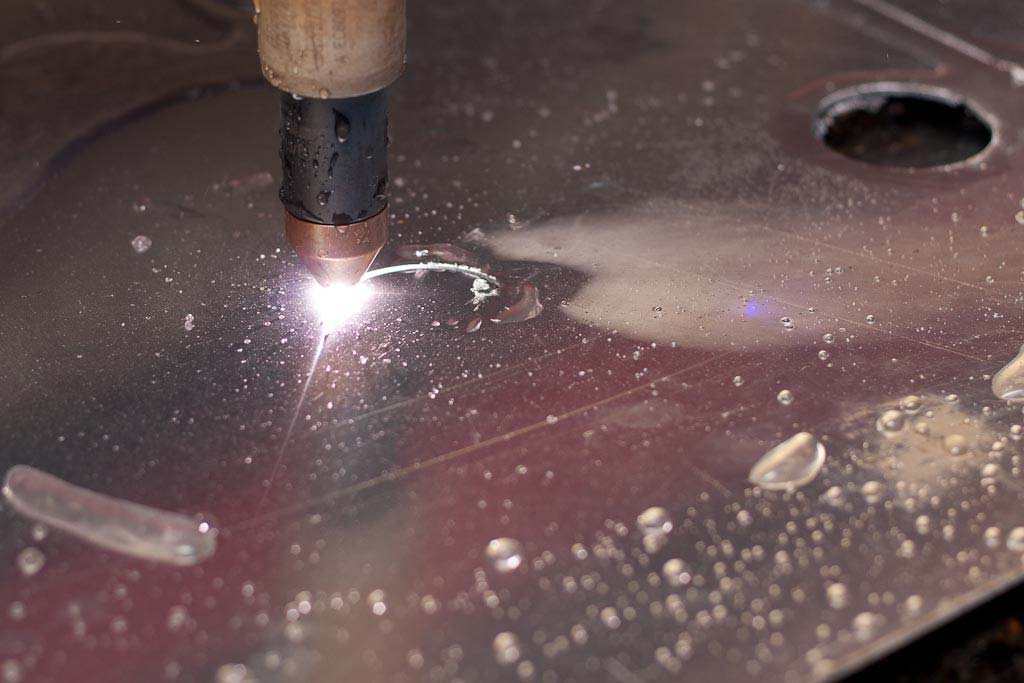
Additionally, fabricating aluminum using plasma cutting is more cost-effective due to lower operating and equipment costs.
Mild Steel
Mild steel is a steel type with low carbon content, usually about 2.1% maximum. It is one of the most commonly used steel forms due to its properties that fit many purposes. Also, mild steel is not expensive to acquire, and its properties, such as high impact strength, weldability, and ductility.
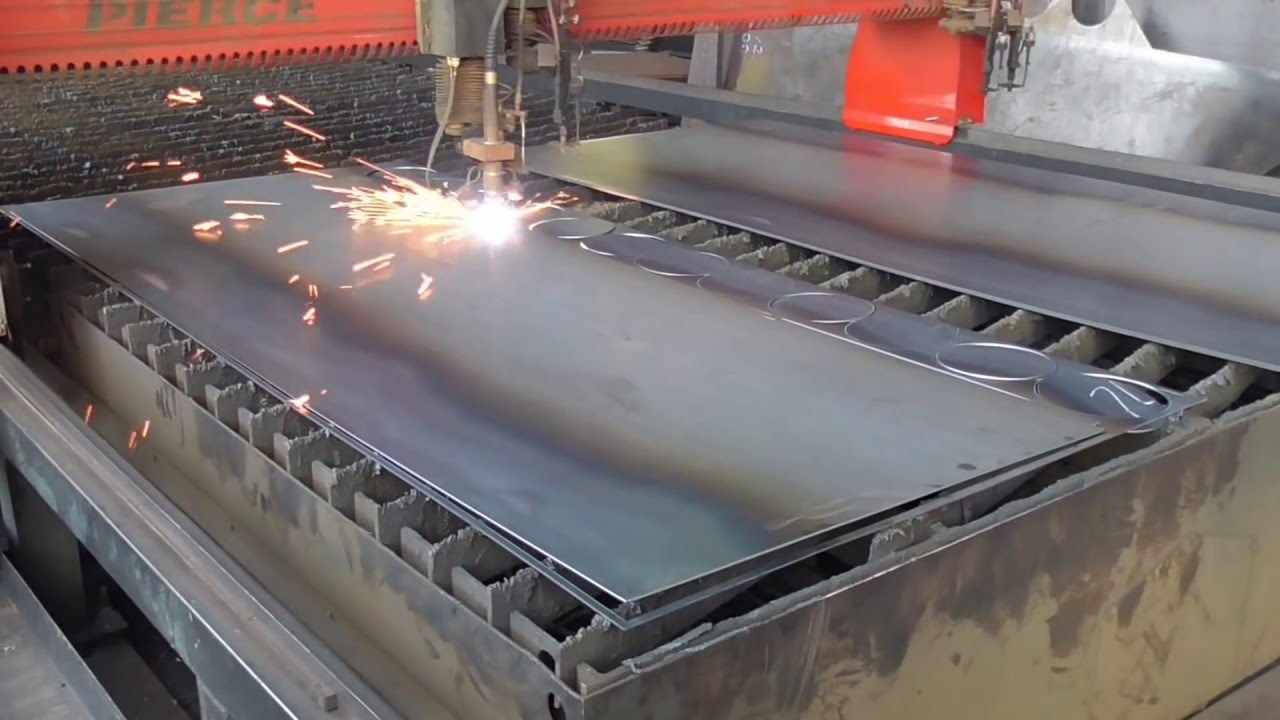
Stainless Steel
Stainless steel is an alloy of iron that is both corrosion and rust-resistant. Plasma cutting is one of the most effective ways of fabricating this metal, as it allows the cutting thickness to reach up to 30mm. The grades of stainless steel ideal for the cutting include; 304, 304L, 316, 316L, 321, 310S, 317, etc.
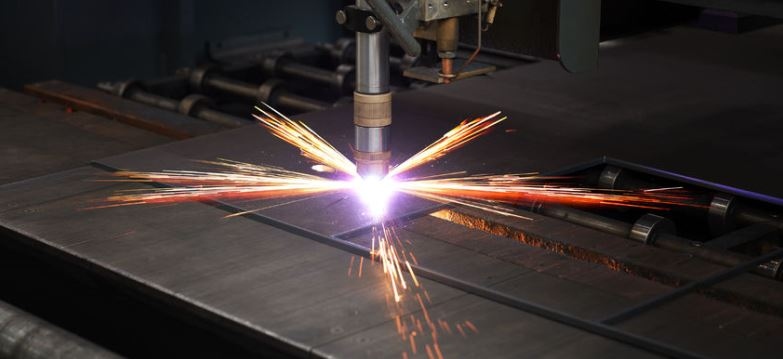
Brass
Brass is another metal easily fabricated using plasma cutting. This is due to its highly conductive nature. However, when fabricating brass using this method, it is best to do so in well-ventilated areas. This is because brass contains zinc, and inhaling fumes that contain burning zinc is detrimental to health.
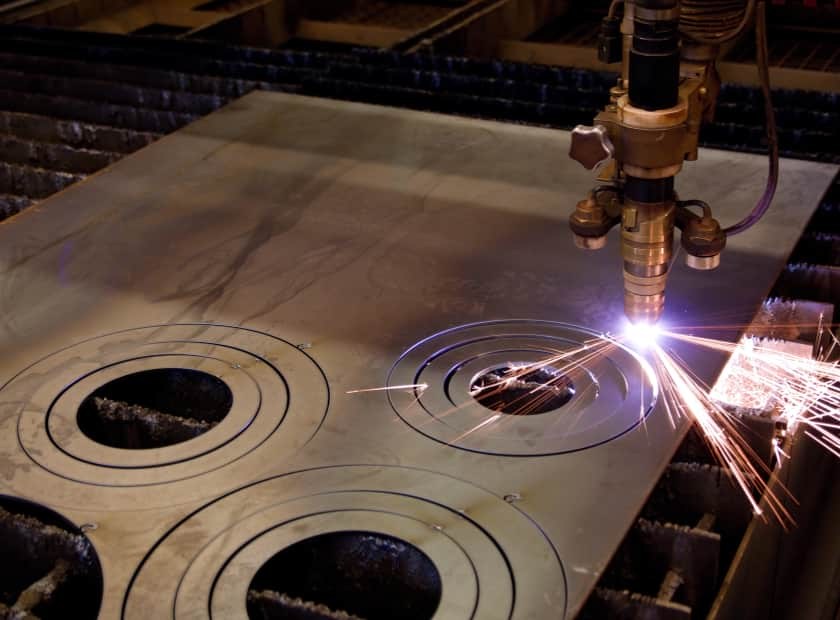
Copper
Copper has the heat and electrical conductivity of all materials outside the precious metals. The important qualities of this metal include; corrosion resistance, high ductility, and weldability. These properties, including its high conductivity, make copper an ideal metal for plasma cutting. However, like brass, it is important to cut this metal in areas with good ventilation.
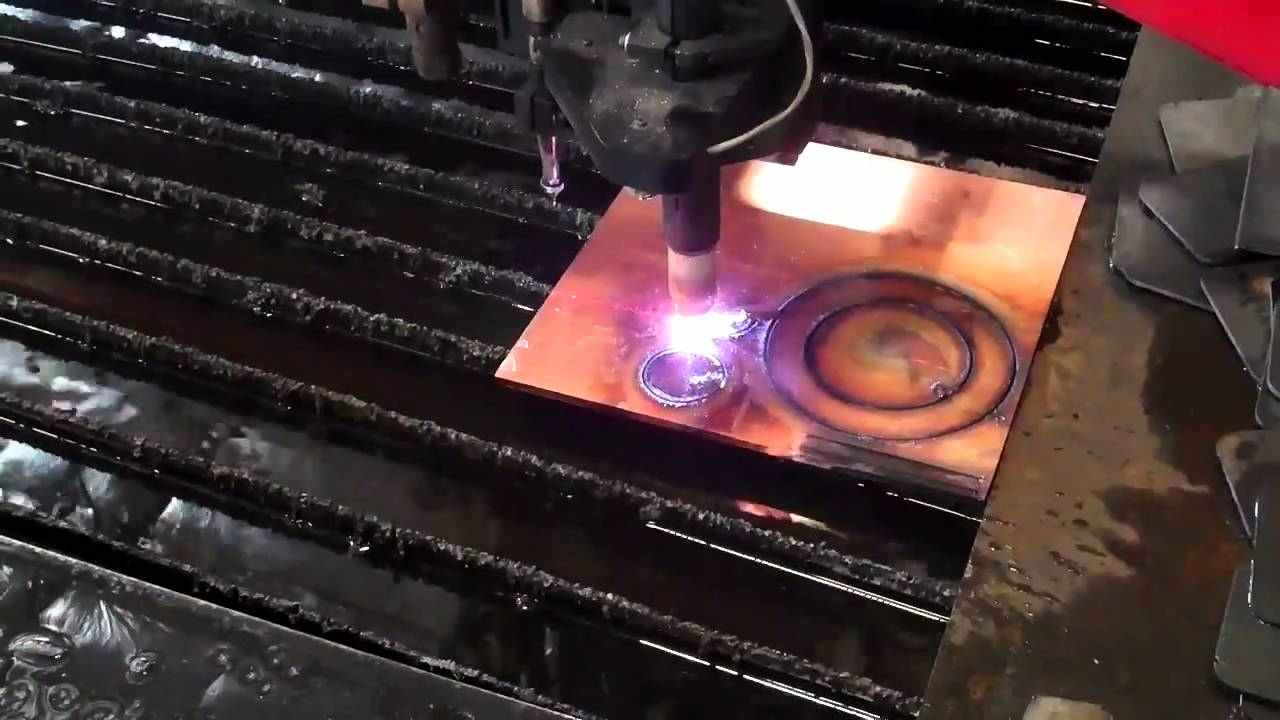
Cast Iron
This metal is popular for its low cost and malleability. In minute quantities, it contains elements like manganese, sulfur, phosphorus, and silicon. Cast iron is very conductive, with high compressive strength and low melting temperature making it ideal for plasma cutting.
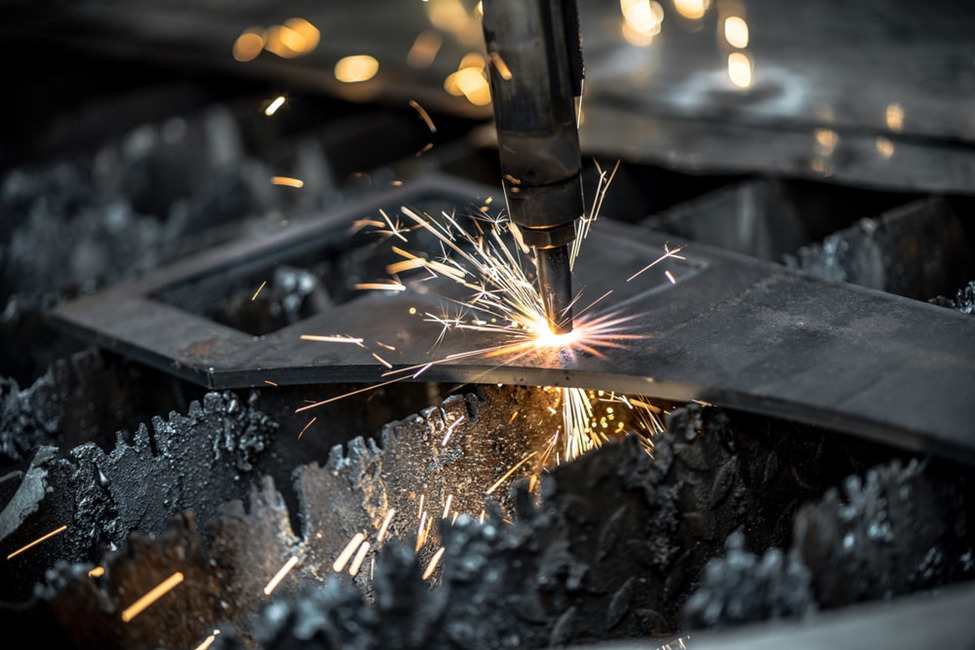
Application of cnc plasma cutting
CNC (Computer Numerical Control) plasma cutting combines the precision of computer control with the efficiency of plasma cutting. This combination offers significant advantages across various industries. Here are some key applications of CNC plasma cutting:
Metalworking and Fabrication:
Cutting complex shapes and patterns in steel, stainless steel, aluminum, and other metals for use in machinery, equipment, and structural components.
Producing parts for the automotive, aerospace, and transportation industries.
Fabricating metal furniture, architectural elements, and decorative pieces.
Construction and Infrastructure:
Cutting steel beams, plates, and sheets for use in building construction, bridges, and other infrastructure projects.
Fabricating handrails, staircases, and other metal structures for buildings.
Cutting profiles for metal roofing and siding applications.
Shipbuilding and Maritime:
Cutting steel plates and profiles for the construction and repair of ships, boats, and offshore structures.
Producing custom parts and components for marine equipment and machinery.
HVAC and Ductwork:
Cutting intricate patterns and shapes in metal sheets for the fabrication of air conditioning and ventilation ductwork.
Art and Sculpture:
Creating intricate, custom-designed metal art pieces, sculptures, and architectural features.
Education and Research:
Used in technical schools and workshops for teaching metal fabrication and cutting techniques.
Employed in research and development settings for rapid prototyping and testing of new designs.
Maintenance and Repair:
Cutting replacement parts and components for machinery, equipment, and infrastructure maintenance and repair.
Conclusion of CNC Laser Cutting
Plasma cutting is a process that involves the use of the fourth stage of matter to cut conductive metals. This process offers many advantages, including higher productivity, versatility, precision, and surface quality.
To get the best out of plasma cutting as a metal fabrication process, you need Leland. We offer one of the best plasma cutting services globally and provide other cutting services like laser cutting. Besides, we have one of the fastest lead times while providing competitive prices. Want to work with us? Simply upload your design to our online platform to get an instant quote!
